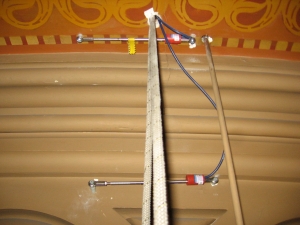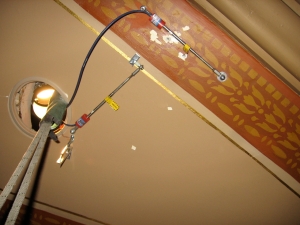As part of our work investigating buildings and structures, Vertical Access documents existing conditions and collects data about a specific moment in time. In most of our surveys, when we collect information about condition quantities, such as crack width and amount of displacement, it is a snapshot of the current condition. In some cases, it is important to document changes over time. When this is the case, instrumental monitoring can be incorporated into the investigation.
One type of instrumental monitoring employs electronic gauges that collect and record data in real time. An example of a project where electronic monitoring has been employed is Marble Collegiate Church in New York City. In 2009, a study was conducted of the roof system and plaster ceiling in the sanctuary of the church. The design team for the project was led by Helpern Architects and included Robert Silman Associates and Vertical Access. Following a survey of the ceiling and development of repair documents, RSA and VA worked together to design a monitoring program to record movement at representative areas of the plaster ceiling, masonry walls and wood roof trusses.
Vibra-Tech was engaged to implement the system, which included vibrating wire crack gauges at the ceiling, vibrating wire strain gauges at the roof trusses and temperature and relative humidity sensors. These crack gauges were installed in February 2011, several months before the planned start of the roof repair and plaster conservation work, to measure and report crack displacement of existing cracks in the sanctuary ceiling, strain on the steel tie rods of the existing roof truss system in the church attic, and temperature and relative humidity in both the attic and sanctuary. Data from the gauges is transmitted continuously to a data center in the church. The real time data is available to the project team on a web site. There are also automatic notifications via email or text messages to the project team when movement thresholds are exceeded.
Another type of monitoring uses crack gauges that must be physically examined to record the data. This more traditional system of monitoring employs crack gauges with sliding plates installed on either side of a crack. One plate has a grid and the other has crosshairs so that any future movement at the crack can be compared to the initial reading. Typically, the crack gauges are affixed to masonry or the other substrate using epoxy. One of the drawbacks of this system of monitoring is that it relies on visually checking each monitor to know whether there has been any movement or not. However, in cases where the purpose of the monitoring is to document any change that may be associated with a known event, this is a reasonable protocol.

